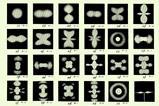Philip Ball ponders life and how to make it
Anyone going to a recent workshop in Greenland entitled ’The merging of bio and nano - towards cyborg cells’ hoping to find a prescription for making synthetic life would have come away disappointed. But what emerged was much more illuminating, and a sobering antidote to breathless talk of ’creating life from scratch’. That quest should properly be seen as more or less meaningless. Hardly anyone would doubt that life is something that emerges from molecular interactions, but the common mistake is to imagine that it is therefore a particular state that can be characterised in a set of criteria.
True, it is hard to see how any entity could qualify as living unless it were self-replicating or possessed a metabolism (two of the most popular requirements) - but in fact even that is open to debate. For example, evolution depends on error in replication, but how much error is permitted before it no longer constitutes copying at all? And must we, a priori, rule out immortality as an alternative to replication? Even setting such quibbles aside, any list of this sort imposes a threshold condition for ’life’ that almost certainly did not apply during the origins of life on Earth, that remains contentious for viruses, and that can never be made less than arbitrary. It is in the end no better than a priest decreeing when a fertilised egg becomes a human or acquires a soul: a route to dogma.
Complicating the notion of ’life’, although not explicitly on the agenda in Greenland, was instructive as well as salutary. Many discussions of ’synthetic cells’ - or equally, of ’minimal cells’ obtained by top-down simplification of existing small-genome organisms rather than bottom-up construction - seem to imply that we can define such a thing in isolation. But you might as well talk of an isolated star forming in the vacuum of deep space. Living things exist in the context of other living things, which provide raw materials and competition that generates diversity through evolution. Without genetic diversity, organisms are not robust in a changing environment. The idea of a stripped-down minimal cell highlights the contingency of what ’minimal’ could mean. You can throw out the genetic machinery for amino acid synthesis if you grow such cells in a medium rich in these essential ingredients - but is that then an autonomous entity? Too much minimisation will leave you with something akin to those ’self-replicating’ chemical systems that simply make copies by acting as a template for two preformed halves of itself.
While working towards a cell-like entity from scratch by adding new functions in a process of gradual complexification is a valid and useful enterprise, it therefore makes little sense to measure it against a yardstick with a notch labelled ’life’. These efforts are instead best directed towards a specific function. Artificial vesicles used as genetically controlled bioreactors, for making protein-based drugs say, may only be complicated needlessly by self-replication if they are easy to produce. And biology need not dictate preconceptions about how to get things done. Julie Theriot of Stanford University confessed her suspicion that protein translation could be achieved without the formidably sophisticated ribosome. An artificial translation machine sounds like a wonderful chemical challenge.
In any event, the feeling in Greenland was that bottom-up synthesis of anything remotely life-like is barely on the horizon, so that at present redesigning life is most usefully broached from the top down: by simplifying genomes to the point where they become a tractable chassis on which to build new machines. These might make fuels, for example, by digesting recalcitrant plant matter into ethanol or designer hydrocarbons; or they could use a suite of genes from plants and animals to assemble natural-product pharmaceuticals. This is already done to a degree in biotechnology, but the experience of Jay Keasling, at the University of California at Berkeley, of making bugs that produce the antimalarial artemisinin - a process requiring the orchestration of over 40 genetic components - shows how difficult it becomes in such a complicated synthetic pathway. All the same, Keasling anticipates seeing the drug go into production affordably by 2009.
Considerably more dramatic things are in store very soon: whole-genome transplants, where cells are ’booted up’ with a new genetic operating system. (The details remain embargoed at the time of writing.) The next step is to do that with a fully artificial genome made by DNA synthesis. This would essentially mean starting life afresh for the first time in 3.5 billion years. If the motivation is to slow global warming (the effects of which were alarmingly apparent in Greenland) or provide cheap drugs for global diseases, it seems a step well worth taking. Life 2.0 is not without its dangers, but to simply damn it as ’playing God’ would be to capitulate to a mistaken view of what being alive may mean.
Further Reading
Kavli Futures symposium ’The merging of bio and nano - towards cyborg cells’, Ilulissat, Greenland, 11-15 June 2007.

















No comments yet